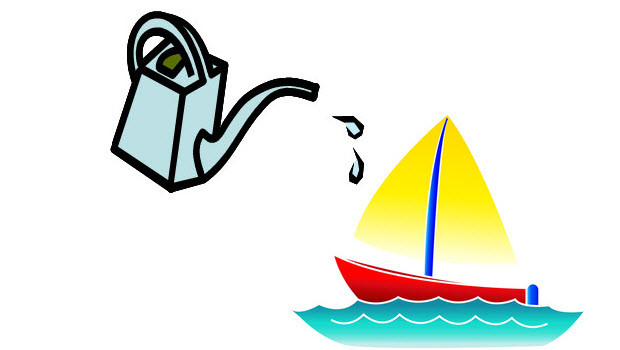Increasing Participation with Dual Scoring
Published on February 16th, 2016
A series of winter seminars have been underway in the UK to increase participation. This report on the program is provided by RORC Rating Office Director James Dadd…
The RORC Rating Office and the Royal Yachting Association (RYA) are now half way through a UK wide tour of yacht clubs and marinas where the discussion is based around getting more people into our sport.
All of us see marinas full of boats of which only a handful can be seen on the water in evening races and weekend events throughout the year. A large number of these boats rarely seem to leave the marinas, and many don’t join the local yacht club or use their facilities, simply finding a good local pub, or bar attached to the marina office instead. Many have also never given racing a try.
So the purpose of the seminars has been to try and understand where these potential fellow competitors are, and why they aren’t coming out to play.
What has become strikingly apparent is that we don’t make it as easy as we can to get people into the clubs and out on to the start line. It is accepted that most people new to racing are not going to turn up with a standard one design and ask what to do. Most will arrive with a boat that was never bought with racing in mind. So we need to apply a system that allows them to join in.
There are two distinctly different options: a rating system or a handicap system based on their personal performance. Many clubs seem to offer two options, but in far too many cases this is two rating systems, with one more complex than the other.
A rating system tries to equalise the fleet by taking the boats characteristics and performance enhancing parameters out of the equation, leaving the only variables to be the crew’s skill and their race preparation. However, this immediately discourages the new competitor, as nine times out of ten they have never raced before.
Those who are new to sailing won’t know the quickest manoeuvres and will be a novice at race trim and set up for performance. Therefore, using a rating system that focuses on the best sailed boat means the people new to racing are going to remain at the bottom of the results sheet for a considerable time. That is discouraging to everyone, and keeping these new racers interested in the sport becomes increasingly difficult.
The alternative is a handicap system. This starts with a base point, which can be very simply set at 1 if you wish. Then using standardised statistical analysis after each race the handicap can be established, in much the same way as a golf handicap. It will change from race to race, and the new racer can use it as a gauge to how well they are improving.
In the first race they come to they may finish first, last, or in the middle. The next race they will likely get closer to the middle, but as their skills develop they will see their handicap gradually go up, keeping their interest and keeping them out on the water racing against people they only saw in the distance a few weeks earlier.
But as their skill improves and they start to think about a rating system, where good crew skill is expected, they need a transition to get from one to the other. This is where dual scoring comes in. If the whole fleet has a handicap value, and the serious competitors have a rating, the fleet can be scored under each system. The new people will focus on the handicap, seeing their improvement, and the more competitive people will focus on the rating, more interested in who sailed their boat closest to the optimum.
Dual scoring allows the two groups to meet.
In our tour we have seen that a great deal of clubs think that they are offering this solution already, but in fact they are offering two rating systems – a complex one and a simplified one. The simplified one is often based on the more complex, but importantly, it does not encourage less skilled sailors to come and play, as it takes no account of their limited experience and skill. It also adds unnecessary complexity when they walk in the doors of the club for the first time, requiring a form and knowledge of their boat that most of us don’t know off the top of our heads.
To get these people in the door the system needs to be a handicap, basing the results on past performance and an understanding that those racing in the handicap system are not necessarily the best out there. In just the same way professional golfer Rory Mcllroy and I are going to get very bored, very quickly playing scratch golf against each other, with a handicap system you can send us to the first tee and we both have something realistic to aim at that is going to maintain the interest for far longer.
To date our seminars have not focused on IRC ratings or NHC (the RYA National Handicap for Cruisers), but interest in using both systems when only one or the other was used previously has been far higher than we had hoped for, with several areas already committed to using both for their coming season.
This structure has been working in Ireland for many years with IRC and ECHO, and I believe it is the structure that would encourage more people into our sport at any club around the world. However, we need to stop focusing solely on what the seasoned racers want, and find the competitors of the future.
I would much rather come 3rd out of a fleet of 50 than 2nd out of a fleet of 5. I am sure most, if not all, would agree. So let’s get more people out there giving it a try under a performance based handicap scheme.
Editor’s note: Has anyone developed a handicap system that can be shared? Please email me.









 We’ll keep your information safe.
We’ll keep your information safe.